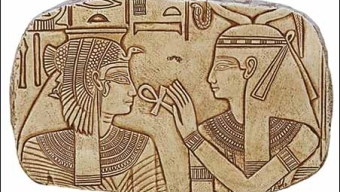Did you know children spend most of the first seven years of life unconscious, working on establishing internal rhythms and building their physical bodies? Yet most of us have no idea about the natural and inter-dimensional rhythms pulsing through us at all times…
When we live without being present and in our bodies, there is no place for soulful, human work to take place. Technology allows us to live outside the laws of nature and therefore out of touch with the rhythms and wisdom of our bodies. This is intensified by modern life and the continual bombardment to our senses. Electronic media and the mechanical “busi-ness” that permeates much of our lives hurls us out of ourselves and into a world of entertainment, early “educational” programs, and a network of electromagnetic currents, non-stop!
The diseases of our time seem to be over-stimulation, over-extension, and a general sense of over-whelm! It is this centrifugal force of our technological age that keeps us more deeply asleep to the subtle conditioning of unconscious consumerism. Now more than ever, something crucial is needed from us as parents. The effect this is having on our children is monumental! There is an epidemic increase in serious health conditions among children today including allergies, asthma, learning disabilities and emotional and sleep disturbances.
This calls for a strong return to our senses, the sense of ourselves, our values, our center. A centripetal force is needed to direct us back to what is essential in our lives.
“In between the breathing in and the breathing out lie all the mysteries of the Infinite Garden.”
Essene Gospel of Peace
I began to sincerely question our modern life as a mother of
{+++}
two pre-school aged children and a part-time day-care mother to several other young children. It seemed whenever a situation occurred that required extra care, I had no reserves to care properly for all of us. Increased demands meant something suffered. The play-group was very healthy on many levels for all of us, but the added stress of being responsible for other families when my own children needed extra care was the difficult part. I began to see that the one-sided development that I grew up in (which largely conditioned my behavior,) is just what undermines our society at large.
There is one part of our brain which classifies, sorts, organizes, plans and analyzes. It is powerfully efficient. It is what technology is torn out of. And it is only part of us. When we think we can do justice to full-time work and parenting or when our to-do lists are an arms-length long, then it’s time to get back in touch with our bodies and natural rhythms. Creating healthy rhythms in our homes these days is very difficult. It may be one of the most difficult tasks parents face because everything in life is telling us otherwise. Slowing down and finding a quiet-place in ourselves helps us to get in touch again with what is really needed each day: a reasonable pace, eating properly, healthy activity and rest. It sounds very basic, doesn’t it? But look closer.
If someone asked you what you did today and you said, “Made a great meal and cleaned the bathroom,” few would respond by saying, “Wow, that’s amazing! You are really somebody!” But the truth is, you are incredible if you could do these things with loving attention. That’s the truth, but we don’t see it because our “sorting mind” is busy making arm-length to-do lists. It is an art, to create out of ourselves meaningful rhythms that allow a home to breathe. It is essential to create a home where useful activities (cooking, cleaning, mending, playing), are followed by quiet, “letting go” periods. And this is exactly what supports a return to what is essential in our lives. Rhythm in the home has to do with the heartbeat or pulse of a family. It is the life-blood of humanity. Now does it sound more important? Yes. It is! This work may be what will, in time, make a difference on our planet. Our homes are a carrier of culture. How we choose to cultivate our time together is crucial! How artistic, social, religious and scientific impulses are nurtured in our homes is up to us, and it does make a difference.
How can we approach this awesome task, as parents, at the turn of this century? First, by having a greater understanding of children’s needs and human development. Did you know children spend most of the first seven years of life unconscious, working on establishing internal rhythms and building their physical bodies? An adult has a rhythm of 1:4 breaths to heartbeats. A newborn has irregular heartbeats to every breath. Also circadean (24 hour) rhythms are established in the metabolism and digestion. The brain and body makes connections in the first seven years of life that far exceed any other period of growth. Children learn to conquer gravity, stand up, walk forward and backward. They develop language and get a bunch of teeth! Wow!!! Their vital energy is needed to build healthy bodies for their life-work ahead of them. We can honor this work through finding healthy rhythms in our home life. Long ago, archetypal movements and rhythms of sweeping, stirring, cleaning and kneading carried the family. Purposeful movements were there for children to model. They are rapidly disappearing.
Through one’s creative resources, rhythms can be formed, daily, weekly, and yearly. Rhythms can be formed through festivals which support you and your children in living an authentic life, impervious to the constant pull of distractions and over stimulation that mark our time. As our children grow in their rhythm they will know what healthy activity (meaningful work) and rest (letting go) are, and not be pulled sway so easily by peer and cultural suggestion or by greed, insatiability and power-plays. They will know how to return to themselves and find a human-being there instead of a human-doing with an arm length to-do list.
*Very Special Thanks to Tracey Harrington for allowing us permission to share her wonderful article.
n





















